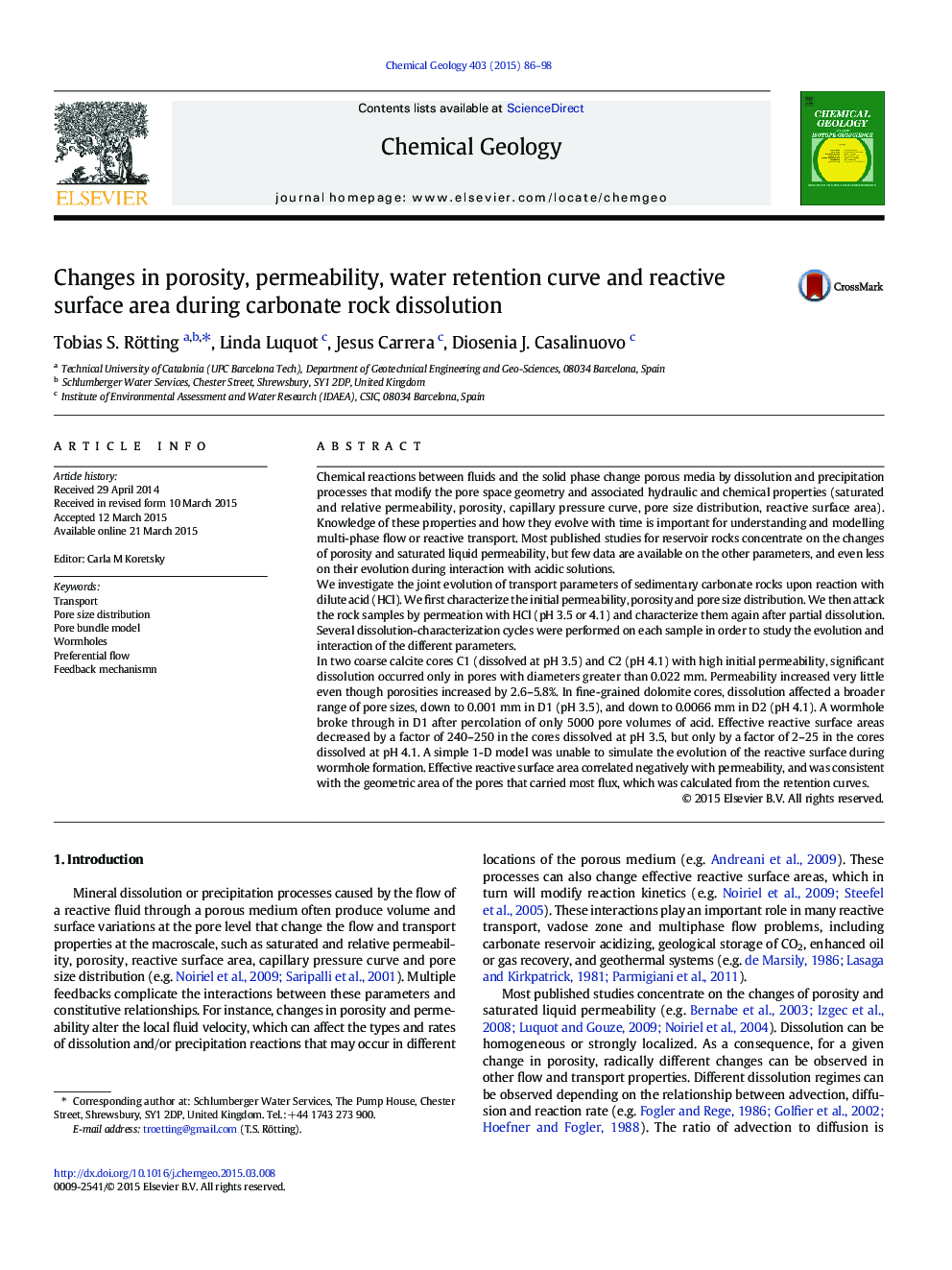| کد مقاله | کد نشریه | سال انتشار | مقاله انگلیسی | نسخه تمام متن |
|---|---|---|---|---|
| 6436418 | 1637570 | 2015 | 13 صفحه PDF | دانلود رایگان |
- We study the joint evolution of transport parameters of dissolving carbonate rocks.
- We measure permeability, porosity, capillary pressure curve, reactive surface area.
- Dissolution affected mainly the largest pore sizes due to wormhole formation.
- Reactive surface area was negatively correlated with permeability on a log-log scale.
- This relationship could improve modelling of preferential flow and transport.
Chemical reactions between fluids and the solid phase change porous media by dissolution and precipitation processes that modify the pore space geometry and associated hydraulic and chemical properties (saturated and relative permeability, porosity, capillary pressure curve, pore size distribution, reactive surface area). Knowledge of these properties and how they evolve with time is important for understanding and modelling multi-phase flow or reactive transport. Most published studies for reservoir rocks concentrate on the changes of porosity and saturated liquid permeability, but few data are available on the other parameters, and even less on their evolution during interaction with acidic solutions.We investigate the joint evolution of transport parameters of sedimentary carbonate rocks upon reaction with dilute acid (HCl). We first characterize the initial permeability, porosity and pore size distribution. We then attack the rock samples by permeation with HCl (pHÂ 3.5 or 4.1) and characterize them again after partial dissolution. Several dissolution-characterization cycles were performed on each sample in order to study the evolution and interaction of the different parameters.In two coarse calcite cores C1 (dissolved at pHÂ 3.5) and C2 (pHÂ 4.1) with high initial permeability, significant dissolution occurred only in pores with diameters greater than 0.022Â mm. Permeability increased very little even though porosities increased by 2.6-5.8%. In fine-grained dolomite cores, dissolution affected a broader range of pore sizes, down to 0.001Â mm in D1 (pHÂ 3.5), and down to 0.0066Â mm in D2 (pHÂ 4.1). A wormhole broke through in D1 after percolation of only 5000 pore volumes of acid. Effective reactive surface areas decreased by a factor of 240-250 in the cores dissolved at pHÂ 3.5, but only by a factor of 2-25 in the cores dissolved at pHÂ 4.1. A simple 1-D model was unable to simulate the evolution of the reactive surface during wormhole formation. Effective reactive surface area correlated negatively with permeability, and was consistent with the geometric area of the pores that carried most flux, which was calculated from the retention curves.
Figure GA-1: Correlation between permeability k and reactive surface Ao area on a log-log scale. Core C1 (red triangles), C2 (green circles), D1 (purple crosses), D2 (blue rhombi).
Journal: Chemical Geology - Volume 403, 18 May 2015, Pages 86-98
